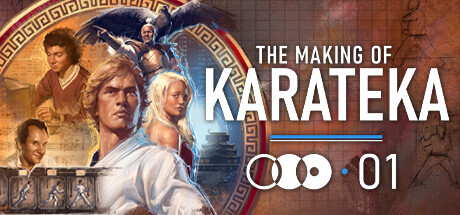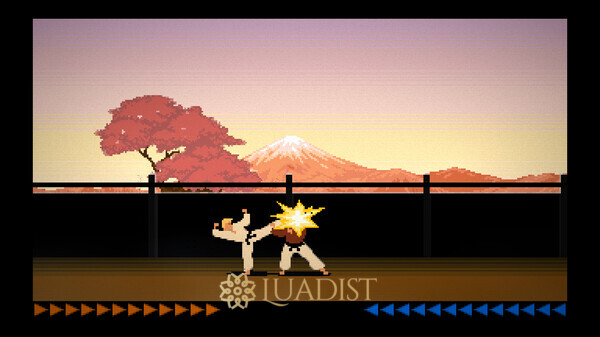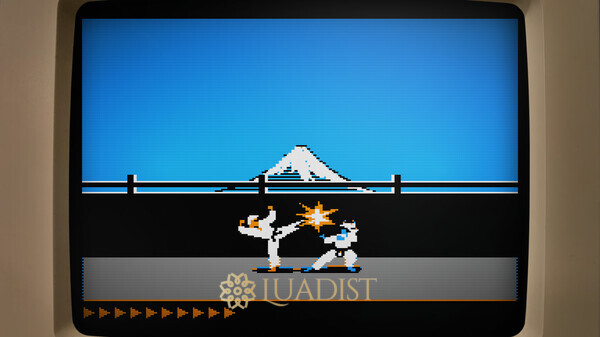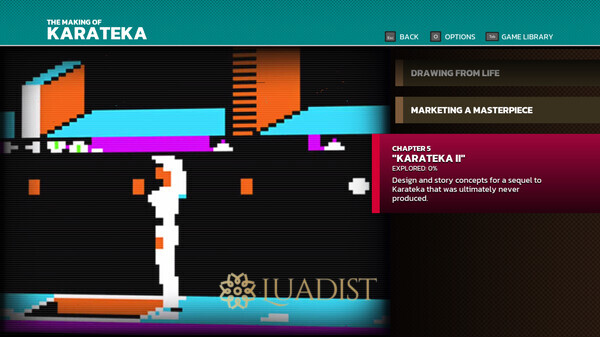| Title | The Making of Karateka |
| Developer(s) | Digital Eclipse |
| Publisher(s) | Digital Eclipse |
| Genre | PC > Action |
| Release Date | Aug 29, 2023 |
| Size | 3.23 GB |
| Get it on | Steam Games |
| Report | Report Game |

In 1982, game designer and programmer Jordan Mechner began working on a video game that would change the landscape of martial arts games forever. That game was Karateka, a side-scrolling action game that was simple in concept but revolutionary in execution. In this article, we will delve into the making of Karateka and explore how it became a cult classic and paved the way for future martial arts games.

The Concept
The idea for Karateka came to Mechner after watching a 1937 film called “The Prisoner of Zenda”. He was struck by the simplicity of the story, with its clear-cut villain and hero. Mechner wanted to create a game that captured that same simplicity and translated it into a martial arts setting.
He envisioned a game with fluid and realistic movements, where players could control a skilled fighter in a one-on-one combat against powerful enemies. Mechner wanted to capture the essence of the martial arts while keeping the gameplay simple and accessible.

The Development Process
Mechner worked on Karateka during his spare time while attending college. At the time, he was also working on another game called “Deathbounce”. He would often switch between the two projects, with Karateka being his passion project.
Mechner’s development process was a mix of trial and error and close observation. He studied his own martial arts moves and even consulted with a fellow student who was a black belt in karate. He also recorded his own movements on video and used them as references for the game’s animations.

The Challenges
Creating Karateka was not without its challenges. One of the biggest hurdles was the limited technology available at the time. Mechner had to work with only 48 kilobytes of memory, which meant that he had to be creative with his coding and graphics to fit everything into the game.
Another challenge was creating animations that were fluid and realistic. In the early days of video games, most animations were choppy and robotic. Mechner wanted Karateka to be different. He wanted the game’s movements to be smooth and lifelike, which was no easy feat with the technology at the time.
The Release and Impact
Karateka was released in 1984 for the Apple II home computer. It was an instant success, with its fluid animation and accessible gameplay winning over gamers around the world. The game also received high praise for its use of cinematic storytelling, with its cutscenes adding an extra layer of depth to the game.
Karateka became a cult classic and has since been released on several other platforms, including Atari, Amiga, and the Nintendo Entertainment System (NES). Its success paved the way for future martial arts games, such as Street Fighter and Mortal Kombat.
The Legacy
Karateka remains a beloved classic for many gamers and holds a special place in the hearts of those who grew up with it. Its influence can be seen in countless other martial arts games, and Mechner’s dedication to creating fluid movements and storytelling has become a staple in the gaming industry.
“The idea for Karateka was to create a video game that didn’t feel like a video game, but more like watching a movie or reading a book.” – Jordan Mechner
In Conclusion
The making of Karateka was a labor of love for Jordan Mechner, and his dedication to creating a simple yet revolutionary game has left a lasting impact on the gaming industry. It remains a testament to the fact that great games can be created with limited technology and a lot of creativity.
If you haven’t had the chance to experience Karateka, we highly recommend giving it a try. It may not have the advanced graphics and gameplay of modern games, but its charm and nostalgia make it a must-play for any gamer.
System Requirements
Minimum:- Requires a 64-bit processor and operating system
- OS: Windows 10
- Processor: Intel i3 @ 3.0GHz or AMD equivalent.
- Memory: 8 GB RAM
- Graphics: ATI Radeon HD 4800 Series, Nvidia GeForce 8800GT or greater
- Requires a 64-bit processor and operating system
How to Download
- Click the "Download The Making of Karateka" button above.
- Wait 20 seconds, then click the "Free Download" button. (For faster downloads, consider using a downloader like IDM or another fast Downloader.)
- Right-click the downloaded zip file and select "Extract to The Making of Karateka folder". Ensure you have WinRAR or 7-Zip installed.
- Open the extracted folder and run the game as an administrator.
Note: If you encounter missing DLL errors, check the Redist or _CommonRedist folder inside the extracted files and install any required programs.